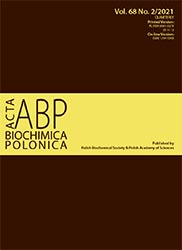Upregulation of miR-1266-5p serves as a prognostic biomarker of hepatocellular carcinoma and facilitates tumor cell proliferation, migration and invasion
Abstract
Objective: Hepatocellular carcinoma (HCC) is one of the leading causes of cancer-related death worldwide. This study aimed to analyze the prognostic value of microRNA-1266-5p (miR-1266-5p) in HCC patients and investigate its biological function in HCC progression. Methods: The expression of miR-1266-5p in tissues and cells was measured by quantitative real-time PCR (qRT-PCR). Cell counting kit-8 (CCK-8) assay was used to detect HCC cell proliferation. Transwell assay was performed to evaluate the migration and invasion of HCC cells. Kaplan-Meier methods and Cox regression analysis were used to assess the prognostic value of miR-1266-5p in HCC patients. The relationship between miR-1266-5p and DAB2IP was evaluated by luciferase reporter assay. Results: Relative expression of miR-1266-5p in tumor tissues, tissues from patients with advanced TNM stage (III–IV) and HCC cells was increased compared with that in corresponding control group. MiR-1266-5p expression was significantly associated with tumor size and TNM stage in HCC patients. Elevated expression of miR-1266-5p was associated with poor prognosis of HCC patients and served as an independent prognostic factor for HCC patients. Overexpression of miR-1266-5p significantly promoted, while miR-1266-5p knockdown significantly inhibited the proliferation, migration and invasion of HCC cells. DAB2IP could directly bind to the miR-1266-5p. Conclusion: Our findings indicated that elevated expression of miR-1266-5p can predict the poor prognosis of HCC patients, and promotes the proliferation, migration and invasion of HCC cells. Therefore, we predict that miR-1266-5p may be a novel biomarker and therapeutic target for the treatment of HCC.
Acta Biochimica Polonica is an OpenAccess quarterly and publishes four issues a year. All contents are distributed under the Creative Commons Attribution-ShareAlike 4.0 International (CC BY 4.0) license. Everybody may use the content following terms: Attribution — You must give appropriate credit, provide a link to the license, and indicate if changes were made. You may do so in any reasonable manner, but not in any way that suggests the licensor endorses you or your use.
Copyright for all published papers © stays with the authors.
Copyright for the journal: © Polish Biochemical Society.


